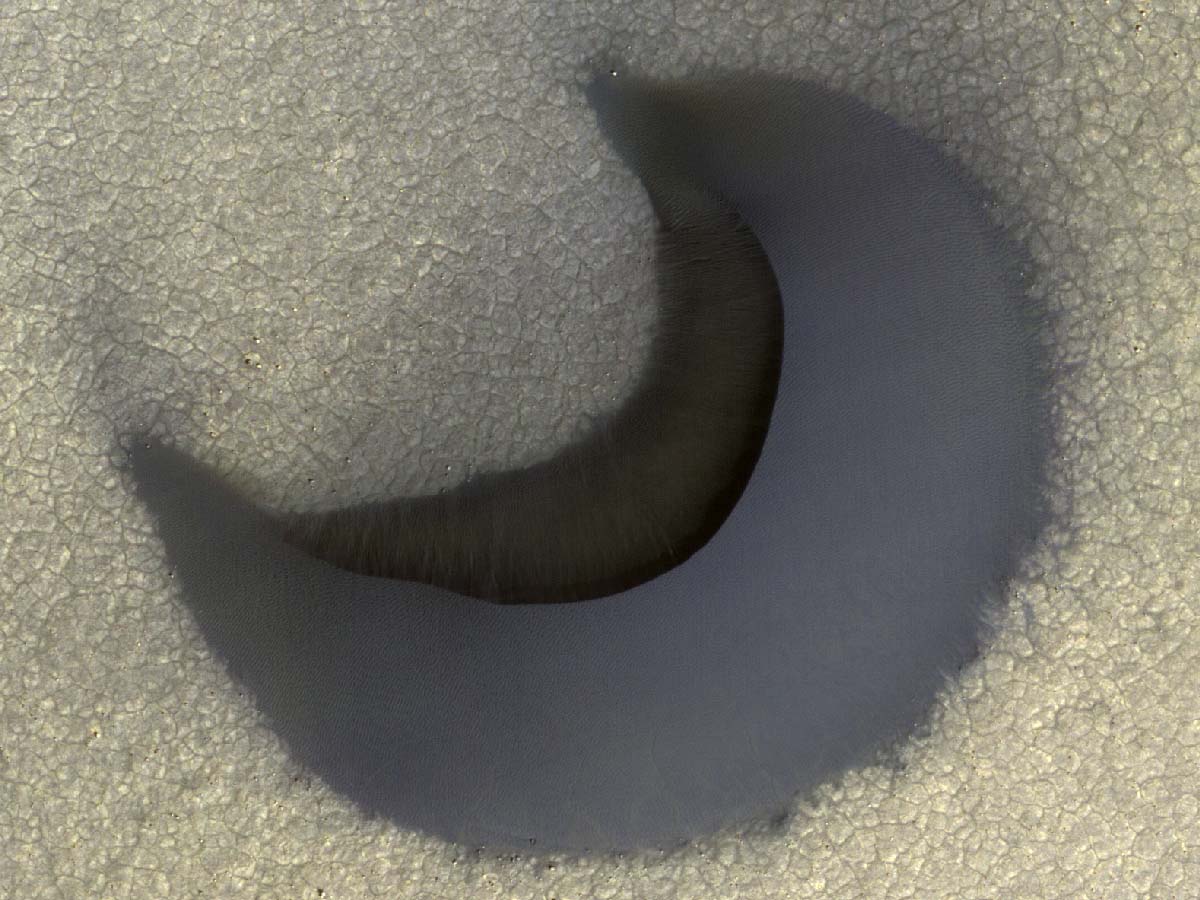Summery dune

How hills change dunes
July 8, 2014
Small dunes up high, big dunes down low
July 29, 2014 A piece of Mars: Last December I blogged about a picture of a sand dune taken in early northern spring. This is the same dune, without frost, now that summer has come to the northern hemisphere and all the frost is gone. It’s quite a difference. Apparently the dunes are controlled by ice in the winter and by the wind in the summer. (HiRISE ESP_035997_2565, NASA/JPL/Univ. of Arizona)
A piece of Mars: Last December I blogged about a picture of a sand dune taken in early northern spring. This is the same dune, without frost, now that summer has come to the northern hemisphere and all the frost is gone. It’s quite a difference. Apparently the dunes are controlled by ice in the winter and by the wind in the summer. (HiRISE ESP_035997_2565, NASA/JPL/Univ. of Arizona)




6 Comments
LOL..I would guesstimate 80% of kitchen linoleum floors on the East coast circa 1970’s had this”polygonal terrain” design.
Devil’s Postpile looks awesome…when you link Earth landscape to the Martian landscape…that’s when it all clicks and i can get the jist of what your showing us.
Thanks
William
My parents still have that floor!
Hmm, maybe I should think about some comparative blog posts, if that helps. It would give me an excuse to play around in Google Earth. 🙂
Haaa, same here.. hopefully your parents have upgraded their kitchen wall mounted MA Bell rotary phone…unlike mine!!
They never had a wall mounted phone in the kitchen (perhaps the only kitchen in N. America without one…). But yes, they upgraded the rotary phones (and the old jacks) maybe 10 years ago.
ha, ha…. Lori, I know it’s silly but, the frost covering gave your spring dune the look of two bottle nose dolphins!!
yep I can see slight changes due to wind effects, what is the funky terrain the charcoal dune is creeping across?
Hi William
Yes, defrosting ice certainly does leave some interesting patterns. Consider yourself lucky your Rorschach Test took you somewhere benign…
The funky terrain is called “polygonal terrain”. It typically forms where there are spatially uniform, horizontal stresses in the ground. You’ve seen polygonal dessication cracks in dirt, I’m sure – they form when the surface dries and contracts, pulling apart into regular shapes. Cooling lava can form columnar structures (Google “Devil’s Postpile”). The ones you see here are likely formed by day/night temperature stresses that crack the surface. They’re common at high latitude on Earth too, like the first image in this link. If you see them in a martian image, you’re probably looking somewhere near one of the poles.